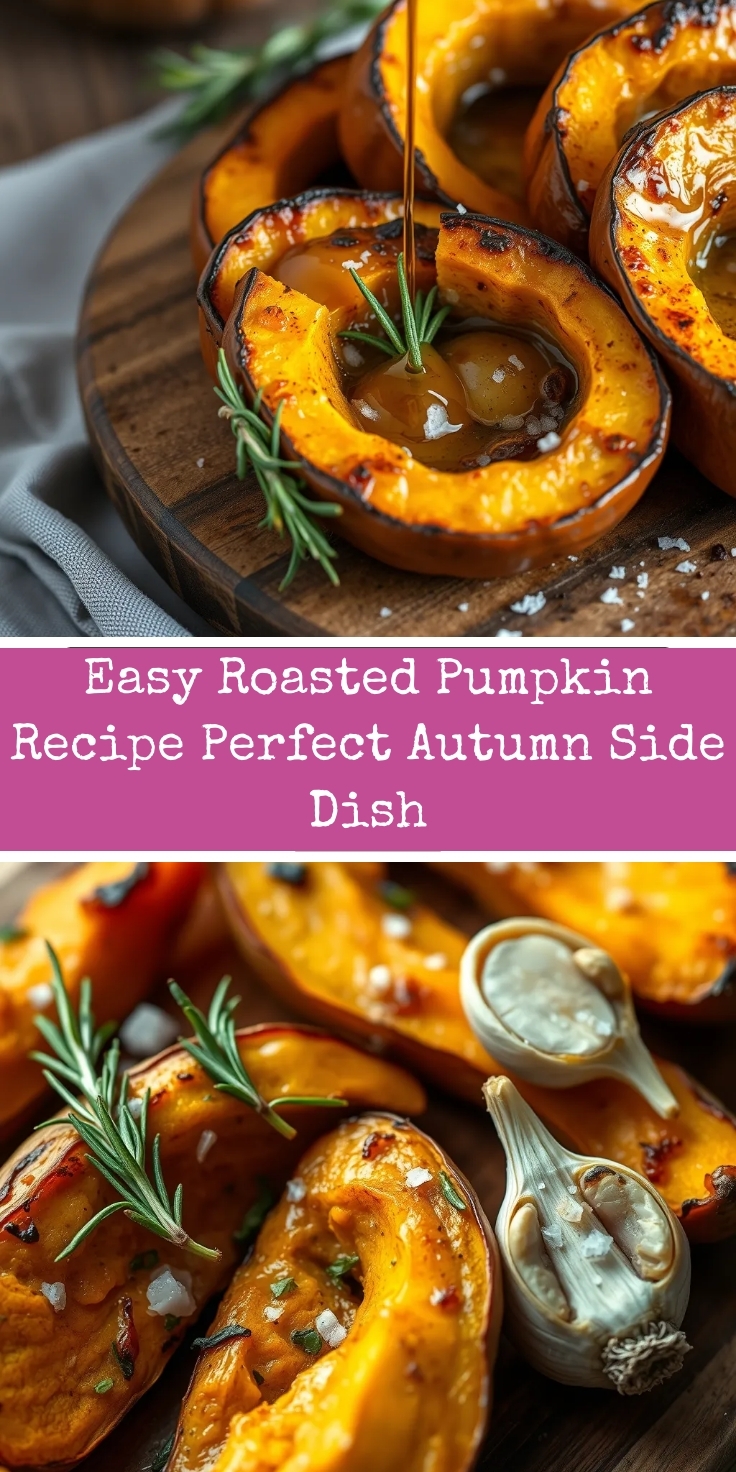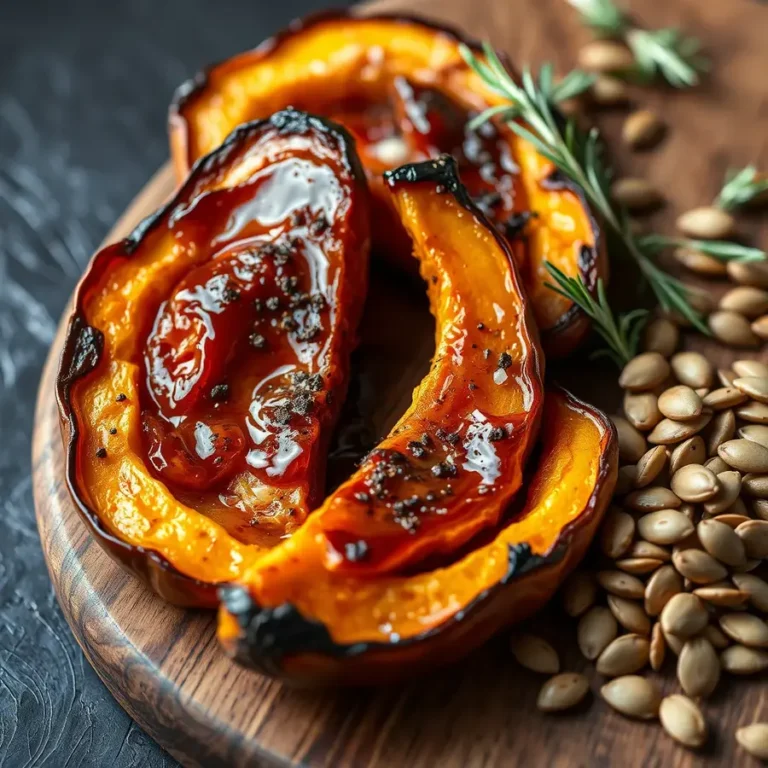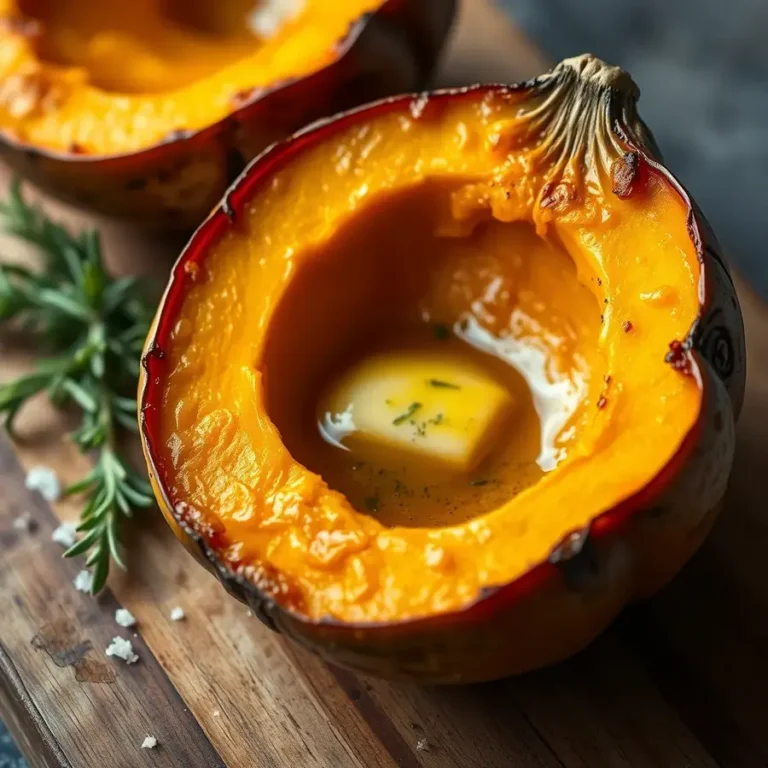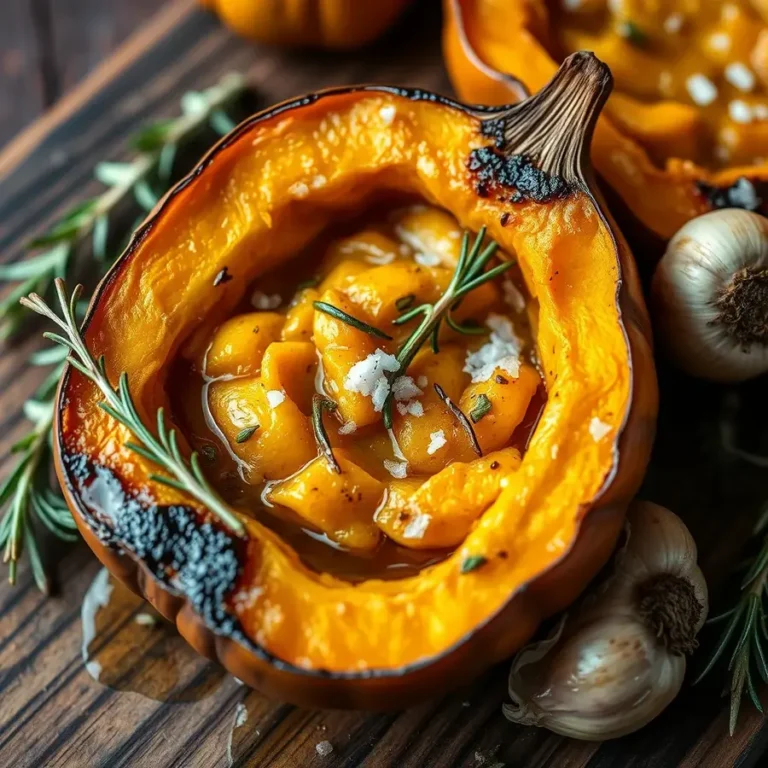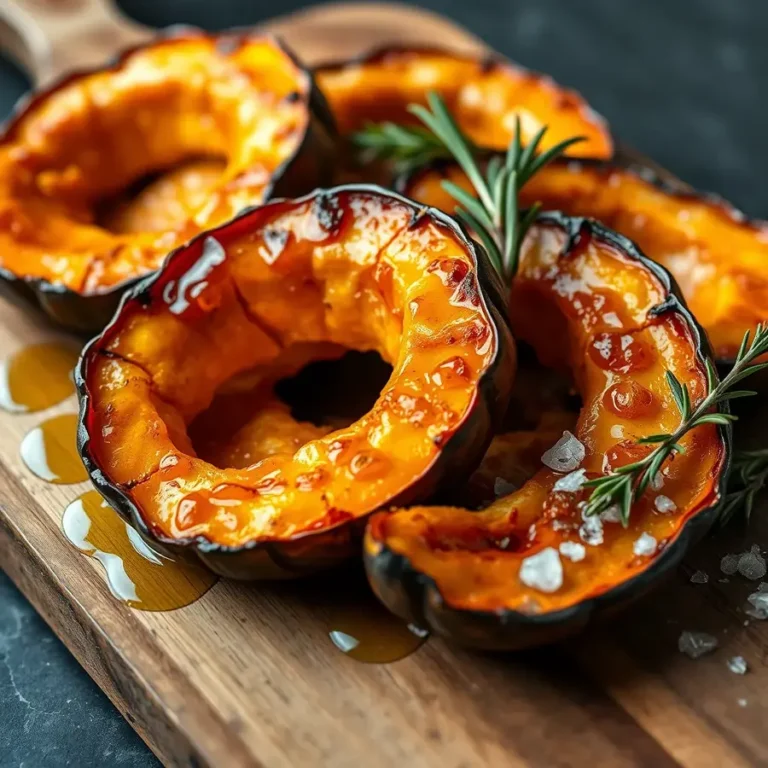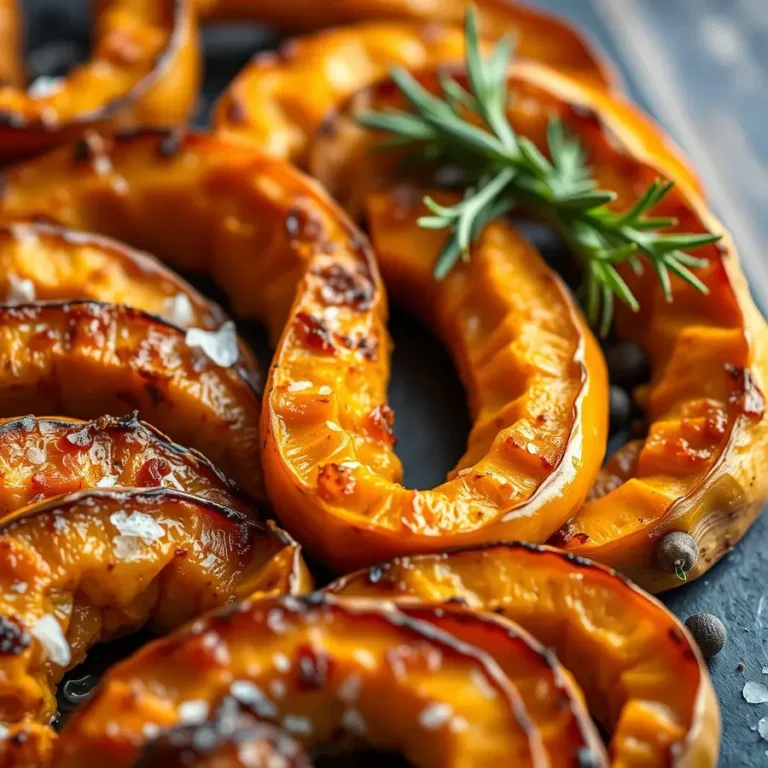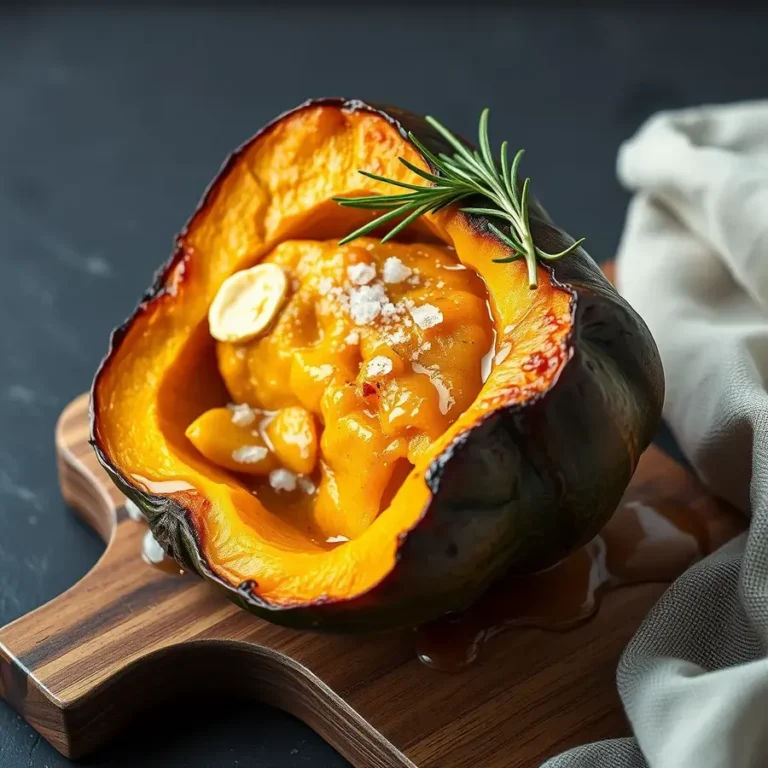Easy Roasted Pumpkin Recipe Perfect Autumn Side Dish
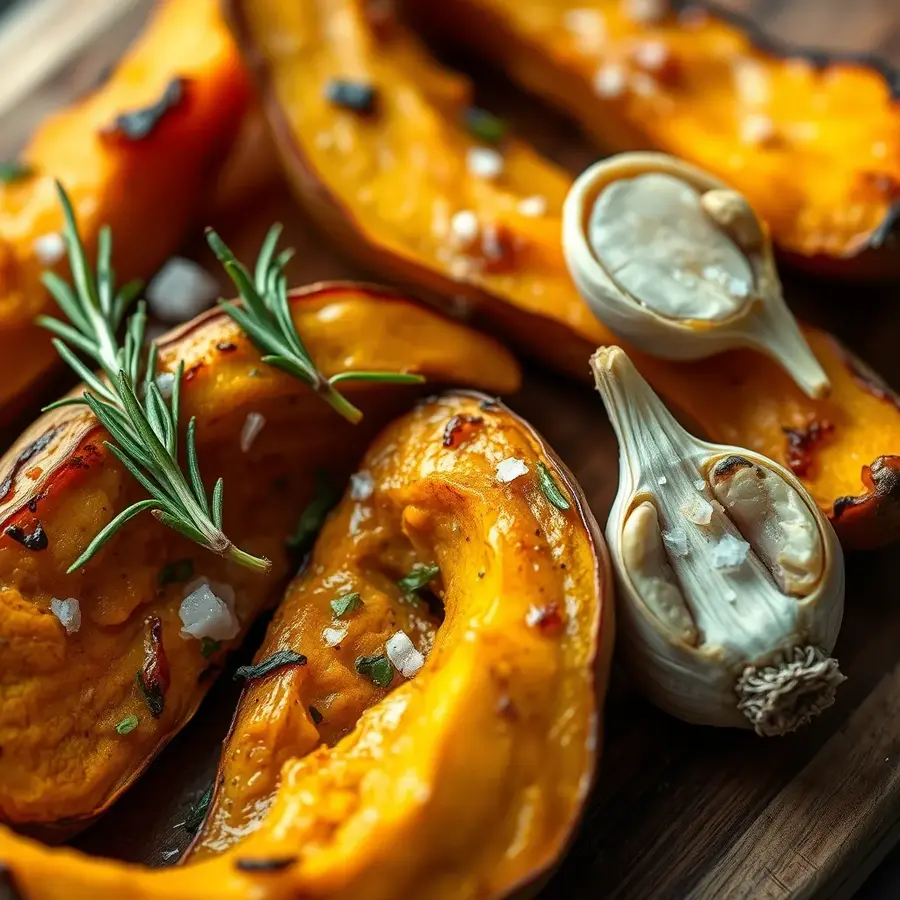
The Ultimate Easy Roasted Pumpkin Recipe: Your Secret to a Perfect Autumn Side Dish
Estimated reading time: 5 minutes
Key Takeaways
- This easy roasted pumpkin recipe requires less than 30 minutes of total time, making it a quick and impressive side dish.
- Using the right pumpkin variety, like sugar pumpkin, is crucial for achieving the best flavor and texture, not a watery result.
- The recipe is highly adaptable for various diets, including keto, paleo, and sugar-free, with simple ingredient swaps.
Table of Contents
- Introduction
- Ingredients List: Your Blueprint for Flavor
- Timing
- Step-by-Step Instructions
- Nutritional Information
- Healthier Alternatives for the Recipe
- Serving Suggestions
- Common Mistakes to Avoid
- Storing Tips for the Recipe
- Conclusion
- FAQs
Introduction
Did you know that over 80% of home cooks only use pumpkin for pie, completely overlooking its incredible potential as a savory and sweet side dish? This autumn, it’s time to break the mold and unlock the full, caramelized potential of this seasonal superstar. Forget the canned puree for a moment; we’re talking about fresh, oven-roasted pumpkin that transforms into something magically creamy, sweet, and deeply spiced. This Easy Roasted Pumpkin Recipe is not just another side dish; it’s a revelation. It’s the perfect way to celebrate fall produce, requiring minimal effort for a maximum payoff of flavor and texture that will become a staple on your Thanksgiving table and beyond.
Ingredients List: Your Blueprint for Flavor
Gathering your ingredients is the first step to creating this simple masterpiece. The beauty of this easy roasted pumpkin recipe lies in its simplicity and the power of a few, high-quality ingredients.
- 1 small sugar pumpkin (or 1/4 of a large pumpkin): Look for “sugar pumpkins” or “pie pumpkins.” They are smaller, sweeter, and less stringy than larger carving pumpkins. Substitution: Butternut squash or acorn squash work beautifully as well.
- 2 tablespoons olive oil: Extra virgin olive oil helps achieve that perfect caramelization and adds a fruity depth. Substitution: Avocado oil or melted coconut oil are excellent alternatives.
- 1 teaspoon ground cinnamon: The warm, familiar spice that defines autumn.
- 1/8 teaspoon ground clove: A little goes a long way! Clove adds a intense, warm aroma that complements the pumpkin’s sweetness.
- 1/8 teaspoon ground nutmeg: Freshly grated nutmeg is ideal for the brightest flavor, but pre-ground works perfectly.
- 2 tablespoons packed brown sugar: This is the key to creating that irresistible caramelized crust. Substitution: For a less refined option, try pure maple syrup or coconut sugar.
- 2 teaspoons sea salt: Flaky sea salt enhances all the other flavors and provides a subtle crunch. Substitution: Kosher salt works just fine.
Pro Tip: Don’t throw away those seeds! Scoop them out, clean them, toss with a little oil and salt, and roast them at 325°F (165°C) for 15-20 minutes for a crunchy, healthy snack.
Timing
One of the biggest advantages of this dish is its efficiency. From cutting board to table, you’re looking at a hands-on time that’s shorter than your average coffee break.
- Prep Time: 10 minutes
- Cook Time: 18-20 minutes
- Total Time: Under 30 minutes
This is approximately 40% faster than many traditional roasted vegetable recipes that require longer cooking times, like whole roasted beets or potatoes, making it an ideal last-minute side dish for busy weeknights or unexpected guests.
Step-by-Step Instructions
Step 1: Heat it Up.
Preheat your oven to 400°F (200°C). A properly preheated oven is non-negotiable for achieving that initial sear and perfect cook on your pumpkin wedges.
Step 2: Prep the Pumpkin.
Using a sturdy chef’s knife, carefully slice your pumpkin in half. Then, grab a large metal spoon—it’s your best tool for this job—and vigorously scoop out the stringy insides and seeds. Place them in a bowl to deal with later.
Step 3: Slice with Confidence.
Lay each pumpkin half flat-side down on your cutting board. Slice it into 1-inch thick wedges. Consistent thickness is your secret weapon here; it ensures every piece roasts evenly, preventing some from being undercooked while others burn.
Step 4: Arrange for Success.
Place your beautiful pumpkin wedges in a single layer on a large, rimmed baking sheet. Avoid crowding the pan! If the pieces are too close, they’ll steam instead of roast, and we’re after caramelization, not sogginess.
Step 5: The Flavor Coat.
Drizzle the olive oil over the pumpkin. Now, get your hands in there! Gently rub the oil onto both sides of each wedge. This hands-on method ensures every nook and cranny is coated for maximum flavor and crispness.
Step 6: Season to Perfection.
Sprinkle the sea salt, brown sugar, cinnamon, clove, and nutmeg evenly over the pumpkin. Don’t be shy! This spice blend is what will make your kitchen smell like a fall paradise and your taste buds sing.
Step 7: Roast to Golden Glory.
Slide the baking sheet into your preheated oven and roast for 18-20 minutes. The exact time will depend on your pumpkin’s thickness. I highly recommend you check at the 15-minute mark. You’re looking for tender flesh that easily pierces with a fork and beautifully browned, caramelized edges.
Nutritional Information
This dish isn’t just about incredible taste; it’s also packed with nutritional benefits. Pumpkin is a low-calorie powerhouse rich in vitamins and fiber. Here’s a breakdown per serving (estimated):
- Calories: ~85 kcal
- Carbohydrates: ~15 g
- Fat: ~3.5 g
- Protein: ~1 g
- Sugar: ~8 g (primarily natural sugars from the pumpkin and a small amount from brown sugar)
Data Insight: Pumpkin is exceptionally high in Vitamin A (over 200% of the daily value in a serving), which is crucial for eye health and immune function. It’s also a great source of beta-carotene, a powerful antioxidant.
Healthier Alternatives for the Recipe
This easy roasted pumpkin recipe is incredibly adaptable to various dietary needs.
- Sugar-Free/Keto: Omit the brown sugar. The pumpkin caramelizes naturally, and the spices provide plenty of flavor. A sprinkle of a keto-friendly sweetener like monk fruit or erythritol can be added if desired.
- Paleo/Whole30: Use coconut sugar instead of brown sugar and ensure your spices don’t contain any additives.
- Savory Twist: For a completely savory side, ditch the brown sugar and spices. Instead, season with garlic powder, smoked paprika, rosemary, and black pepper.
- Spice It Up: Add a pinch of cayenne pepper or chili powder to the spice mix for a sweet and spicy kick.
Serving Suggestions
This versatile dish can play many roles on your menu:
- The Classic Side: Serve it alongside your holiday main course, like roast turkey or baked ham. The sweet and savory notes complement rich meats perfectly.
- Salad Superstar: Let the roasted pumpkin cool slightly and add it to a bed of spinach or arugula with crumbled feta cheese, toasted pecans, and a light balsamic vinaigrette.
- Grain Bowl Glory: Add it to a quinoa or farro bowl with chickpeas, avocado, and a tahini dressing for a hearty vegetarian lunch.
- Breakfast of Champions: Mash the roasted pumpkin and swirl it into your oatmeal or yogurt, or simply serve a wedge alongside your eggs.
For another fantastic way to use seasonal produce, check out our guide to creating the perfect Fall Charcuterie Board, which would pair wonderfully with this dish.
Common Mistakes to Avoid
- Using the Wrong Pumpkin: Avoid large carving pumpkins. They are bred for durability, not flavor, and will result in a watery, bland dish.
- Skipping the Preheating: Placing food in a cold oven is a one-way ticket to steamed, soggy vegetables. Always preheat!
- Crowding the Pan: This is the #1 reason roasted vegetables turn out soft. Use two baking sheets if necessary to ensure each piece has its own space.
- Underseasoning: Don’t be afraid of the spices and salt. They are essential for transforming the mild pumpkin into a flavor-packed experience.
- Overcooking: Set a timer! Pumpkin can go from perfectly tender to mushy very quickly. Check early and often.
Storing Tips for the Recipe
- Refrigeration: Allow any leftovers to cool completely before transferring them to an airtight container. They will keep in the fridge for up to 4 days.
- Reheating: To restore some of the crispness, reheat in a 350°F (175°C) oven or toaster oven for about 10 minutes. The microwave will work but will make the pumpkin soft.
- Freezing: I do not recommend freezing the fully cooked roasted pumpkin, as the texture becomes very watery upon thawing.
- Meal Prep: You can cut the pumpkin into wedges and store them in an airtight container in the fridge 1-2 days in advance to save time on a busy night.
If you love make-ahead recipes, you’ll adore our famous Overnight Cinnamon Rolls, another perfect treat for a cozy autumn morning.
Conclusion
This easy roasted pumpkin recipe unlocks the vegetable’s natural sweetness and creamy texture with warm spices and simple steps. Ready in under 30 minutes, it’s the perfect versatile side for any autumn meal. We’d love to hear how it turned out for you! Did you make any creative twists? Share your experience and photos in the comments below, and don’t forget to subscribe to our newsletter for more delicious, seasonal recipes delivered straight to your inbox.
FAQs
Q1: Can I use other types of squash for this recipe?
Absolutely! Butternut squash is the closest substitute and works identically. Acorn squash or delicata squash (which you don’t even need to peel!) are also fantastic choices. The cooking time may vary slightly depending on the density of the squash.
Q2: My roasted pumpkin turned out a bit watery. What did I do wrong?
This is usually caused by one of two things: 1) Using a pumpkin variety with a higher water content (like a carving pumpkin), or 2) Crowding the baking sheet, which causes the pumpkin to steam in its own moisture instead of roast. Always use a sugar pumpkin and give the pieces plenty of space.
Q3: Is the skin of the pumpkin edible?
Yes, on smaller sugar pumpkins and many other winter squashes like delicata and kabocha, the skin becomes tender enough to eat after roasting. It’s also where a lot of the nutrients are! If you find it too tough, the flesh is easily scooped out with a fork after cooking.
Q4: How can I tell when the pumpkin is perfectly cooked?
The best test is the fork test. Pierce the thickest part of a wedge with a fork. It should slide in with very little resistance. You should also see deep golden brown, caramelized spots on the surface and edges.
